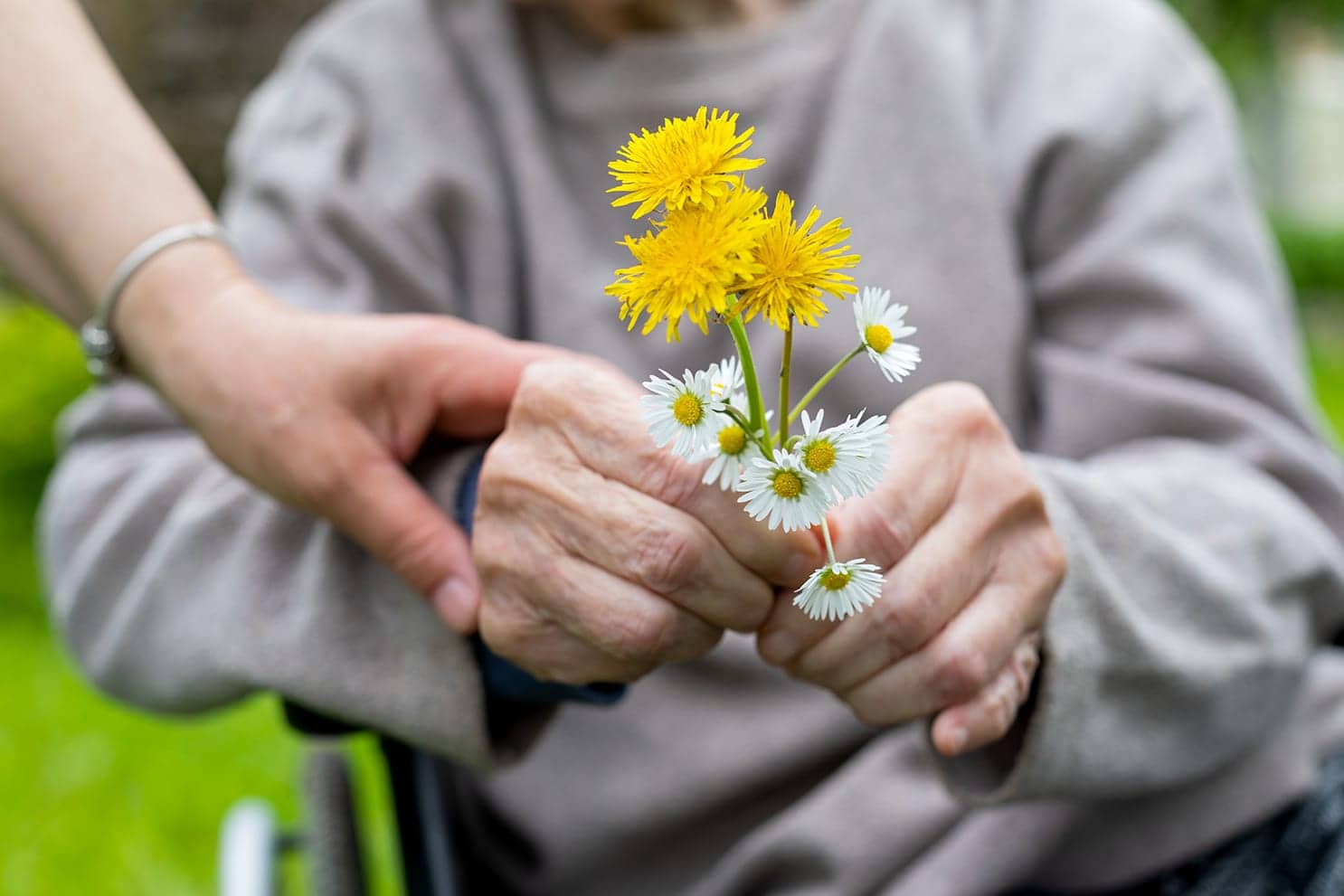If your loved one or friend is living with Alzheimer’s or another form of dementia, you may have found one of the many challenges is how to connect with conversation.
As the illness progresses, the profound struggle of being able to speak is often experienced. Unfortunately, this may cause others to avoid visiting someone with dementia because they don’t know what to say or how to react. But it may help to understand that communication can happen even when words are no longer possible.
10 tips for Alzheimer’s conversations
These suggestions can help prepare and encourage you to engage with those who have Alzheimer’s. And remember, your presence and compassion are what’s truly important, no matter what may or may not be said.
- Set the scene to be comfortable and considerate
There’s typically a better time of day when visiting someone with dementia, which is often morning or early afternoon. When you arrive, introduce yourself, using your name and relationship, if needed.
Sit at eye level with the person. Make eye contact and smile. Depending on the relationship, you may want to hold a hand or offer other physical signs of affection. Pay attention to their expression and body language and always remember to follow their lead.
- Minimize distractions and be prepared
Try to turn off the television or minimize other disturbances in the room. Having a conversation with someone with Alzheimer’s requires the attention of both of you and you don’t want to compete with additional noise.
Also, prepare yourself ahead of time with possible topics. Don’t assault the person with a constant series of questions that may make the situation uncomfortable. Allow time so the individual can think and decide how to answer.
- Keep the conversation simple and direct
Try to avoid conversations that have multiple ideas or include complex steps to understand. Requiring the individual to follow a complicated thought process will likely lead to a frustrating and unsuccessful visit.
Only bring up one idea at a time and use simple words and shorter sentences. Yes or no questions can be easier or ask questions with one to two choices for the answer that you provide, such as “would you like coffee or tea to drink?”
- Try talking about a shared experience
You might try to bring up a memory you both shared and talk about some of the details to see if they contribute. Follow their response as they may be extra talkative that day or in a quieter mood.
But don’t put anyone on the spot. Avoid asking the individual if they remember a specific occasion or person. It can be embarrassing or frustrating for them if they don’t.
- Pictures or photographs can be a great aid
Bring along photo albums, yearbooks, magazines or illustrated books when visiting someone with Alzheimer’s. Pictures can be a visual aid to go with a story or help them understand the topic of the conversation.
Introduce photos with the names and relationships of everyone included. You can add memories you have about the captured moment. Non-familiar pictures can sometimes be less threatening because there’s no stress if the person has forgotten a family member.
- Read a book or watch a movie together
You can talk about different passages in a book or scenes in a movie that have meaning or make you laugh. You never know when a memory will get triggered.
If they have a favorite book or movie, share it together. Read aloud or arrange to play the video but make sure there is no pressure from you to get them to remember a certain character or details, such as when you both first saw the movie. Refrain from asking what they remember.
- Listen to music together
Music has the power of eliciting emotions. Musical memories are often preserved in a person with Alzheimer’s because the key brain areas linked are relatively undamaged. Music can also relieve stress, reduce anxiety, depression and agitation.
If there was a favorite style, group or song, arrange to listen to it together. You can share your stories of what a song may have reminded you off and pay attention if they respond.
- Personalize your time together
Depending on the individual and where they may be in the illness, try to make your visits personalized to their abilities and moods.
Earlier on in the illness, open-ended questions may trigger memories for the person. But keep in mind, asking questions can help only if the person is able to access the memory and put it into words. Otherwise, you may cause feelings of frustration or embarrassment.
- Remember that responses may not always be verbal
As your loved one advances through the progressive illness of Alzheimer’s, using words or expressions may no longer be possible. But that doesn’t mean you can’t still communicate.
Pay attention to facial expressions, eye contact, gestures or other ways of responding. If they seem uncomfortable, try another topic or move on to another idea. If their anxiety continues, it may be time to end the visit and try again another day.
- What not to say or do
Always treat the individual as an adult. Don’t speak in a child-like voice.
Give them time to answer. We often are in the habit of quick or rushed conversations.
Never talk to someone else in the room as if the person with dementia isn’t there.
Don’t argue with what they say. You can’t win and will only make them feel angry or frustrated.
Life at Tapestry Senior Living communities
If you or your family are considering assisted living or memory care, we hope you will contact us to discover everything we offer. When you choose to move into a Tapestry Senior Living community, you’ll find our priority is helping our residents to engage in life.
As our name implies, we believe the richest life is the result of many threads woven together. At Tapestry Senior Living, our caregivers, services, amenities and person-centered approach all support our residents to live as independently as possible, with dignity and purpose.
If you have any questions about our communities or the benefits that senior living can offer, please download a copy of The Dollars and Sense Guide to Senior Living or contact one of our advisors.







